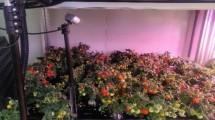Abstract
Since the existing tomato picking system uses multispectral sensors, color and other passive sensors for tomato detection and recognition, its detection range is very small, anti-interference ability is also weak, and tomato maturity detection cannot be performed accurately in real-time. How to detect tomato information from the massive image data obtained from tomato picking equipment and improve the recognition accuracy is a challenging research topic at home and abroad. This paper proposes an improved DenseNet deep neural network architecture, and uses it to solve the detection problems of maturity tomato in complex images. In order to enhance the accuracy of feature propagation and reduce the amount of stored data, a structured sparse operation is proposed. By dividing the network convolution kernel into multiple groups, the unimportant parameter connections in each group are gradually reduced during the network training process. In addition, since the dataset constructed in the field of tomato picking has imbalance, we introduce the Focal loss function to identify the tomato in the classification layer so as to enhance the accuracy of the final classification prediction of the tomato detection system. A large number of qualitative and quantitative experiments show that our improved network in this paper is superior to other existing deep models in terms of detection rate and FPPI, and its computational complexity is lower than that of DenseNet algorithm 18% under the same hardware and software configuration.






Similar content being viewed by others
References
Ahlin K et al (2016) Autonomous leaf picking using deep learning and visual-Servoing. IFAC-PapersOnLine 49.16:177–183
Alvaro F et al (2017) A robust deep-learning-based detector for real-time tomato plant diseases and pests recognition. Sensors 17.9:2022
Brahimi M, Boukhalfa K, Moussaoui A (2017) Deep learning for tomato diseases: classification and symptoms visualization. Appl Artif Intell :1–17
Cai, Ziyun, et al. () RGB-D datasets using microsoftkinect or similar sensors: a survey. Multimed Tools Appl 76.3 (2017):4313–4355.
Chen TH, Wu PH, Chiou YC (2005) An early fire-detection method based on image processing [C]// international conference on image processing. IEEE(3): 1707–1710
Dimatira J, Baez U et al. (2017) Application of fuzzy logic in recognition of tomato fruit maturity in smart farming. Region 10 Conference IEEE
Dimitropoulos K, Barmpoutis P, Grammalidis N (2015) Spatio-temporal flame modeling and dynamic texture detection analysis for automatic video-based fire[J]. IEEE Trans Circ Syst Video Technol 25(2):339–351
Ernfjäll J, Stigsohn G (2018) Fire detection system[J]. Optoelectronics Instrum Data Process 45(2):140–145
Grzeszick R et al. (2017) Deep neural network based human activity recognition for the order picking process.. Proceedings of the 4th international workshop on sensor-based activity recognition and interaction :1–6
Gubbi J, Marusic S, Palaniswami M (2009) Smoke detection in video using wavelets and support vector machines[J]. Fire Saf J 44(8):1110–1115
Han L et al. (2017) Green ripe tomato detection method based on machine vision in greenhouse. Transactions of the Chinese Society of Agricultural Engineering
Huang L et al. (2017) Densely connected convolutional networks//IEEE The IEEE Conference on Computer Vision and Pattern Recognition (CPVR) Las Vegas IEEE :4700–4708
Listyorini T (2018) A prototype fire detection implemented using the internet of things and fuzzy logic[J]. World Trans Eng Technol Educ 16(1):42–46
Liu W, Anguelov D, Erhan D et al. (2016) SSD: single shot MultiBox detector[C]. European conference on computer vision : 21–37
Misra A, Gupta A, Hebert M (2017) [IEEE 2017 IEEE Conference on Computer Vision and Pattern Recognition (CVPR) - Honolulu, HI (2017.7.21–2017.7.26)] 2017 IEEE Conference on Computer Vision and Pattern Recognition (CVPR) - From Red Wine to Red Tomato: Composition with Context." IEEE Conference on Computer Vision & Pattern Recognition IEEE Computer Society : 1160–1169
Sari YA, Adinugroho S (2017) Tomato ripeness clustering using 6-means algorithm based on v-channel otsu segmentation. International Symposium on Computational & Business Intelligence IEEE
Schwarz M et al. (2017) NimbRo picking: versatile part handling for warehouse automation. IEEE International Conference on Robotics & Automation IEEE
Sermanet SC, LeCun Y (2012) Convolutional neural networks applied to house numbers digit classification. ICPR, IEEE 5:3288–3291
Shimoda W, Yanai K (2015) CNN-based food image segmentation without pixel-wise annotation[J] 9281:449–457
Szegedy VV, Ioffe S, Shlens J, Wojna Z (2016) Rethinking the inception architecture for computer vision. CVPR 2
Tian L, Wang J, Zhou H et al (2018) Automatic detection of forest fire disturbance based on dynamic modelling from MODIS time-series observations[J]. Int J Remote Sens 39(12):3801–3815
Toreyin DY et al (2006) Computer vision based method for real-time fire and flame detection.[J]. Pattern Recogn Lett 27(1):49–58
Wada K et al. (2017) 3D object segmentation for shelf bin picking by humanoid with deep learning and occupancy voxel grid map. IEEE-RAS international conference on humanoid robots IEEE
Wang L et al (2017) Target extraction method of ripe tomato in greenhouse based on Niblack self-adaptive adjustment parameter. Trans Chin Soc Agric Eng 33:322–327
Xie S, Girshick R B, Dollar P, et al. (2017) Aggregated residual transformations for deep neural networks[C]. Computer Vision and Pattern Recognition : 5987–5995
Yuncheng Z et al (2017) Classification and recognition approaches of tomato main organs based on DCNN. Trans Chin Soc Agric Eng 3315:219–226
Zeng A et al. (2016) Multi-view self-supervised deep learning for 6D pose estimation in the Amazon picking challenge
Zhang L et al (2018) Deep learning based improved classification system for designing tomato harvesting robot. IEEE Access 99:1–1
Acknowledgements
This work was financially supported by Independent innovation fund of agricultural science and technology in Jiangsu (No. CX(16)1002).
Author information
Authors and Affiliations
Corresponding author
Additional information
Publisher’s note
Springer Nature remains neutral with regard to jurisdictional claims in published maps and institutional affiliations.
Rights and permissions
About this article
Cite this article
Liu, J., Pi, J. & Xia, L. A novel and high precision tomato maturity recognition algorithm based on multi-level deep residual network. Multimed Tools Appl 79, 9403–9417 (2020). https://doi.org/10.1007/s11042-019-7648-7
Received:
Revised:
Accepted:
Published:
Issue Date:
DOI: https://doi.org/10.1007/s11042-019-7648-7




